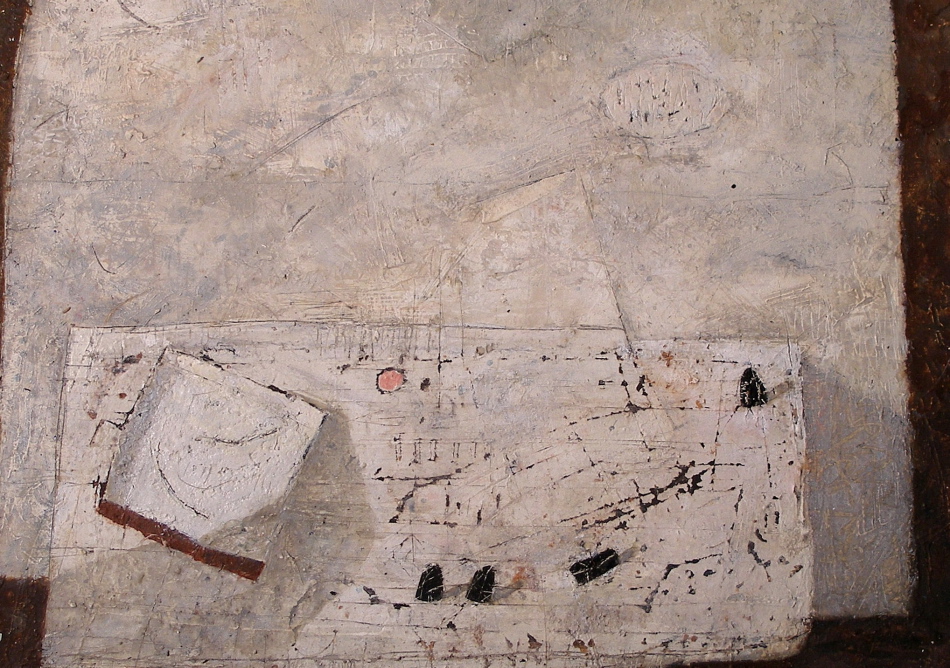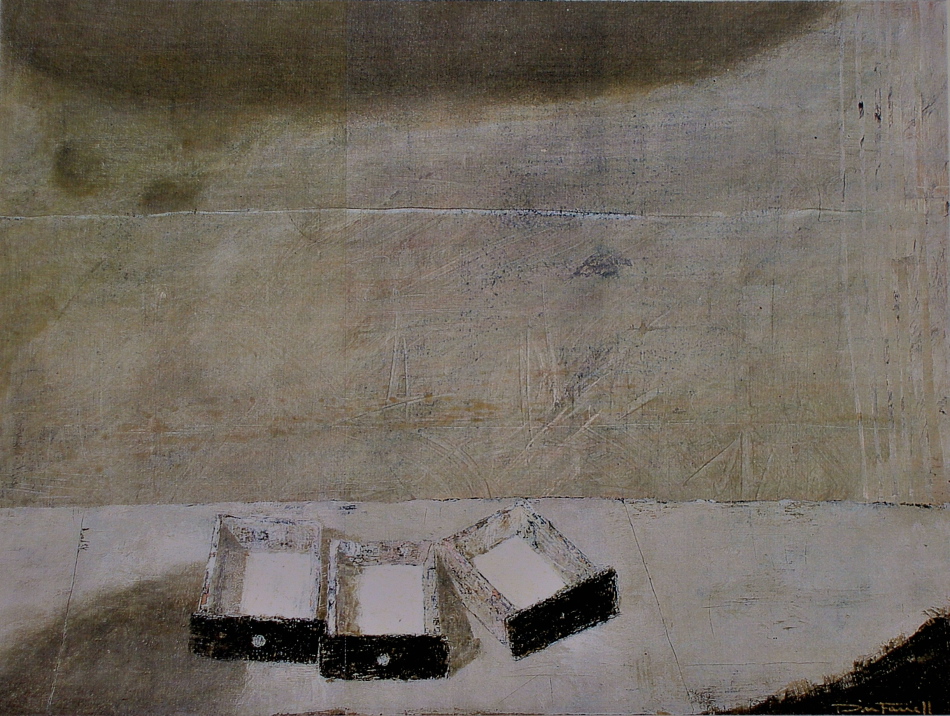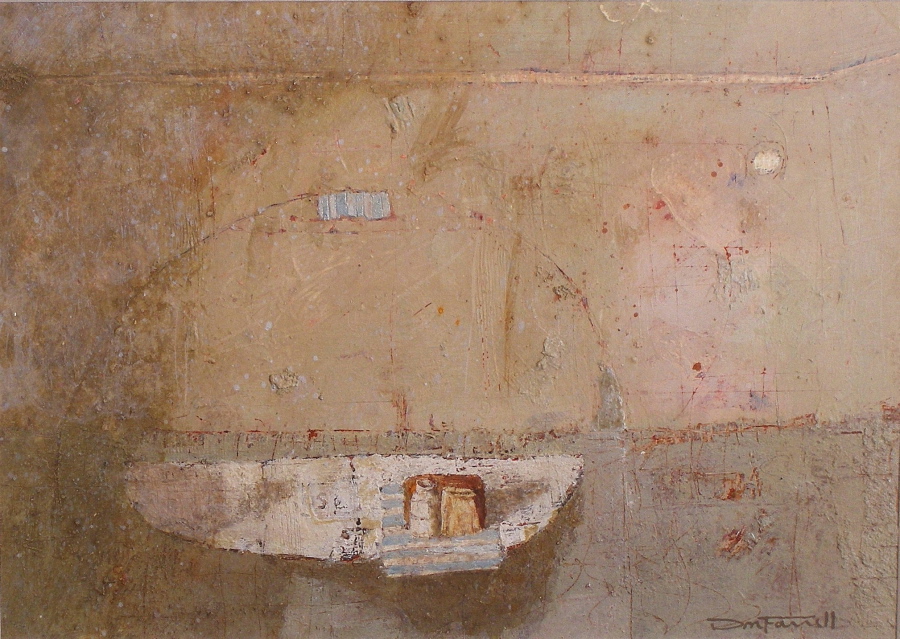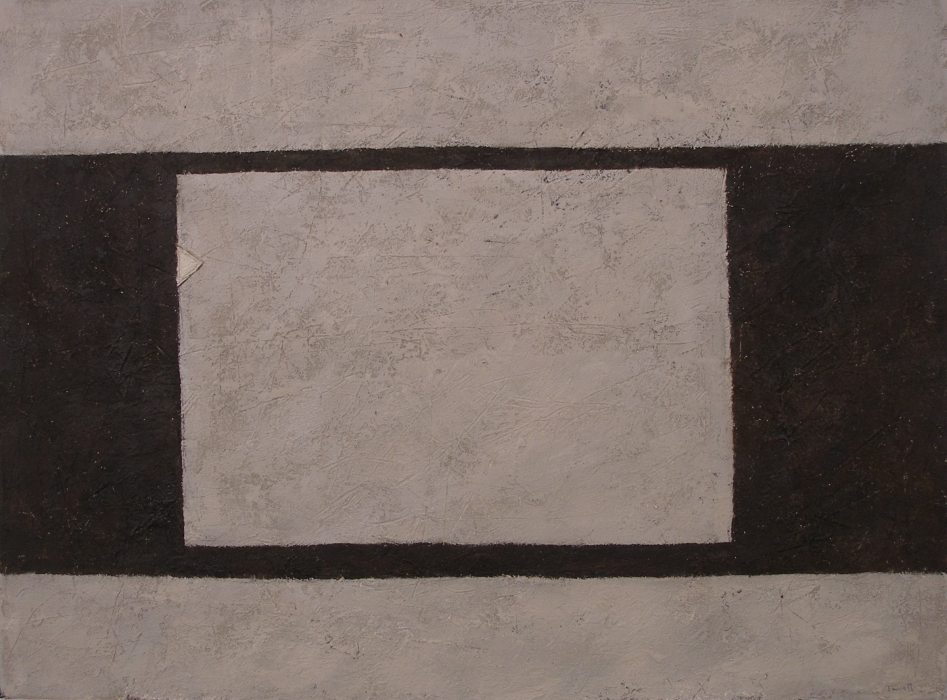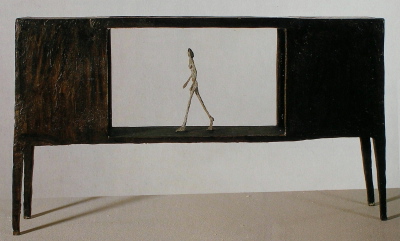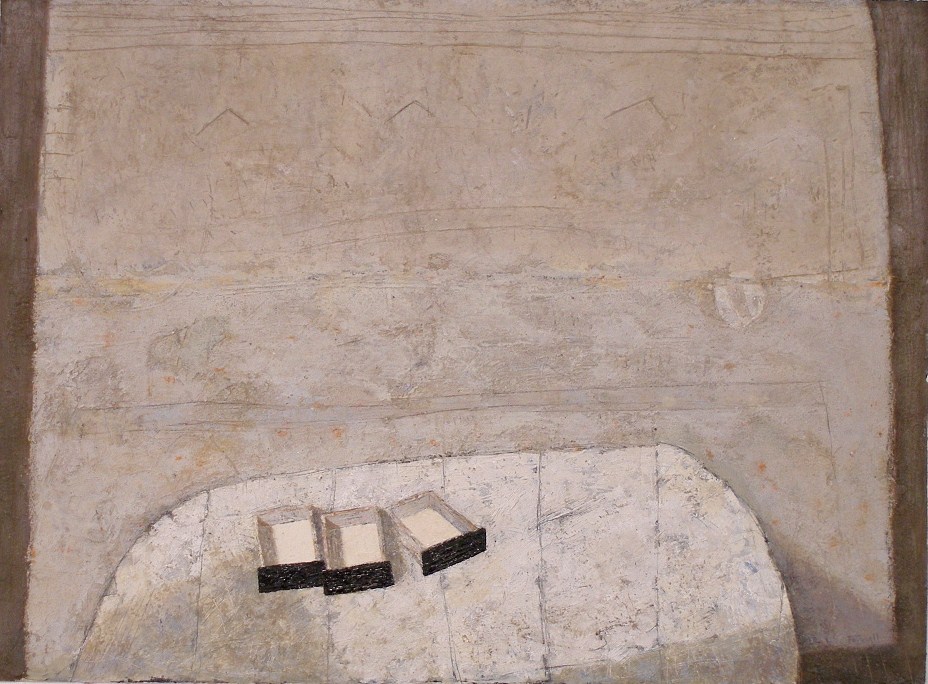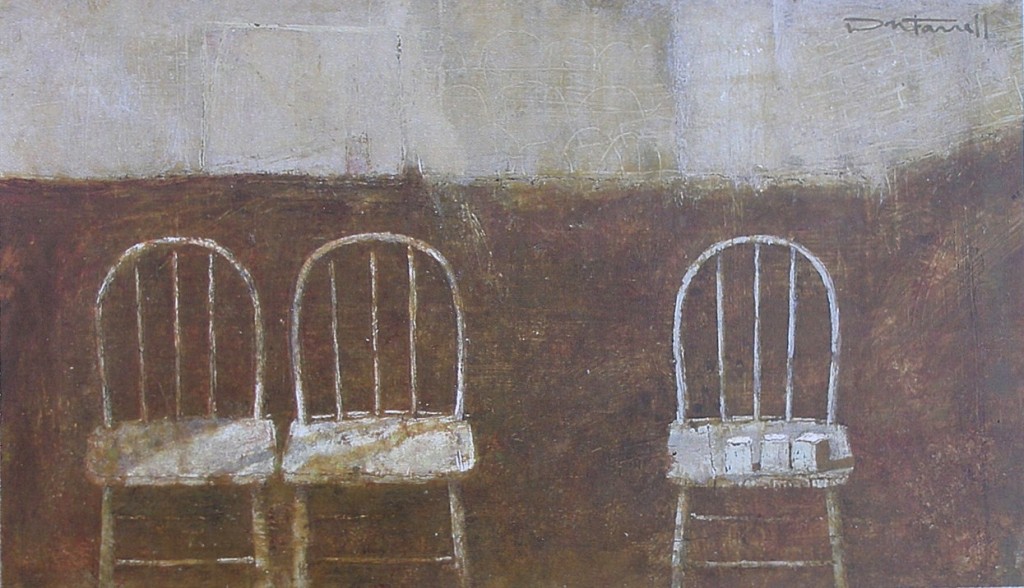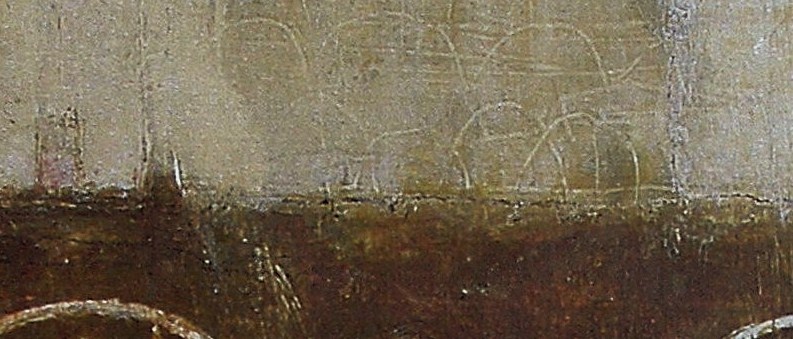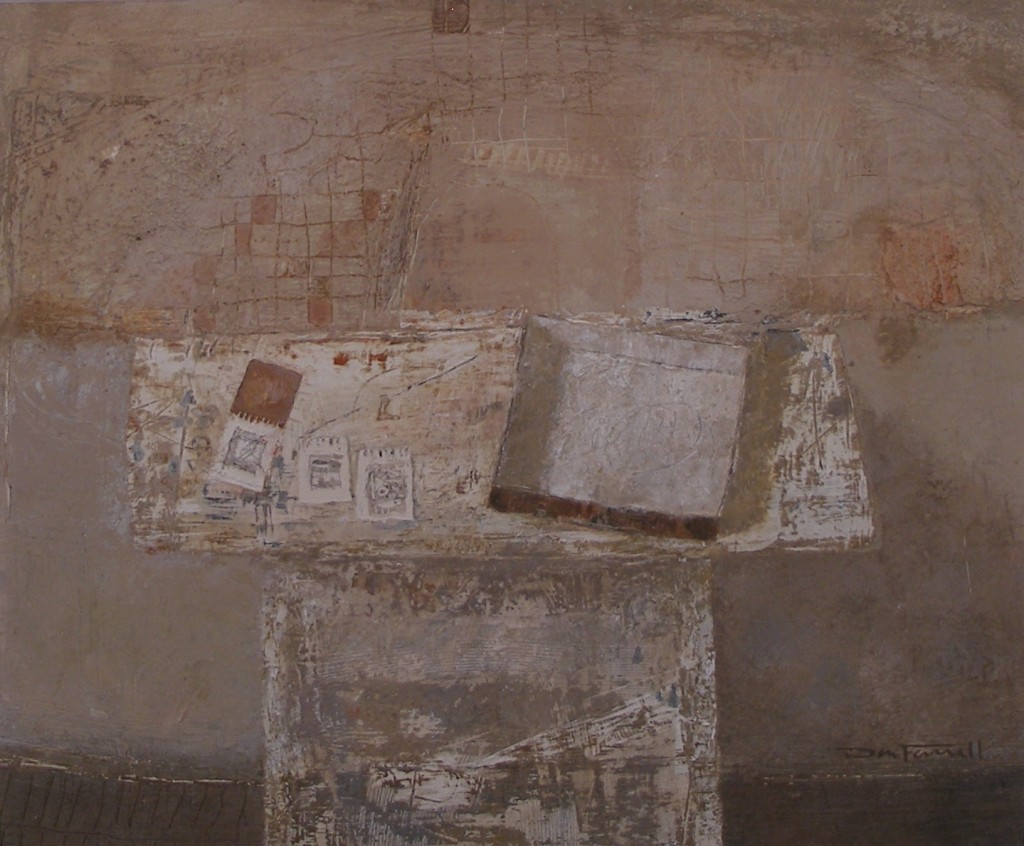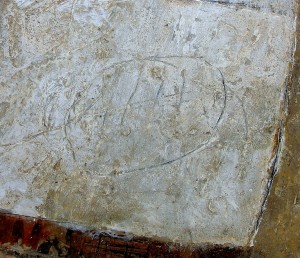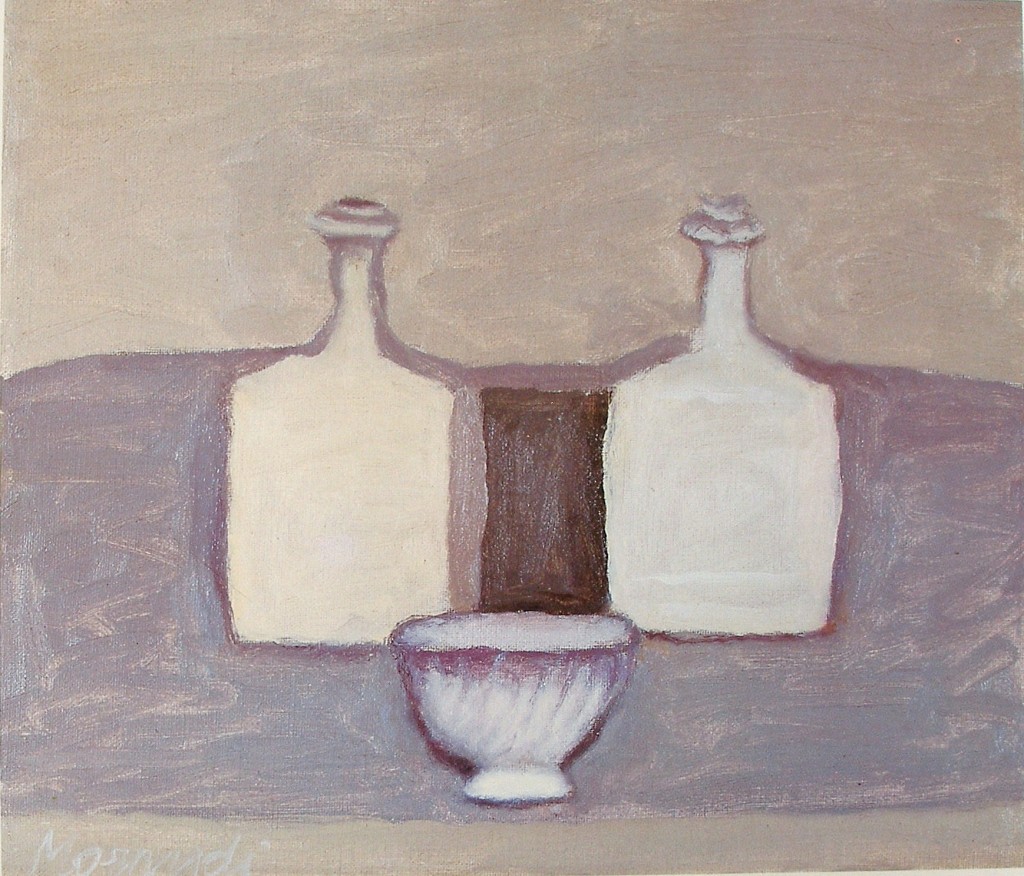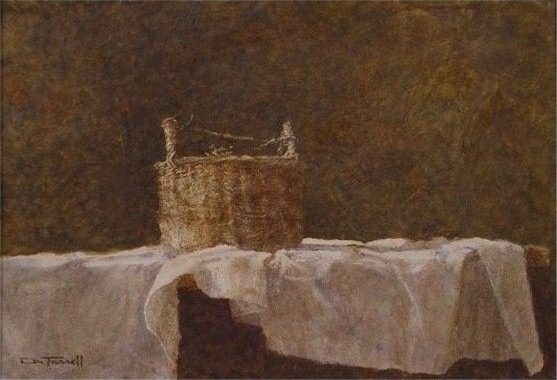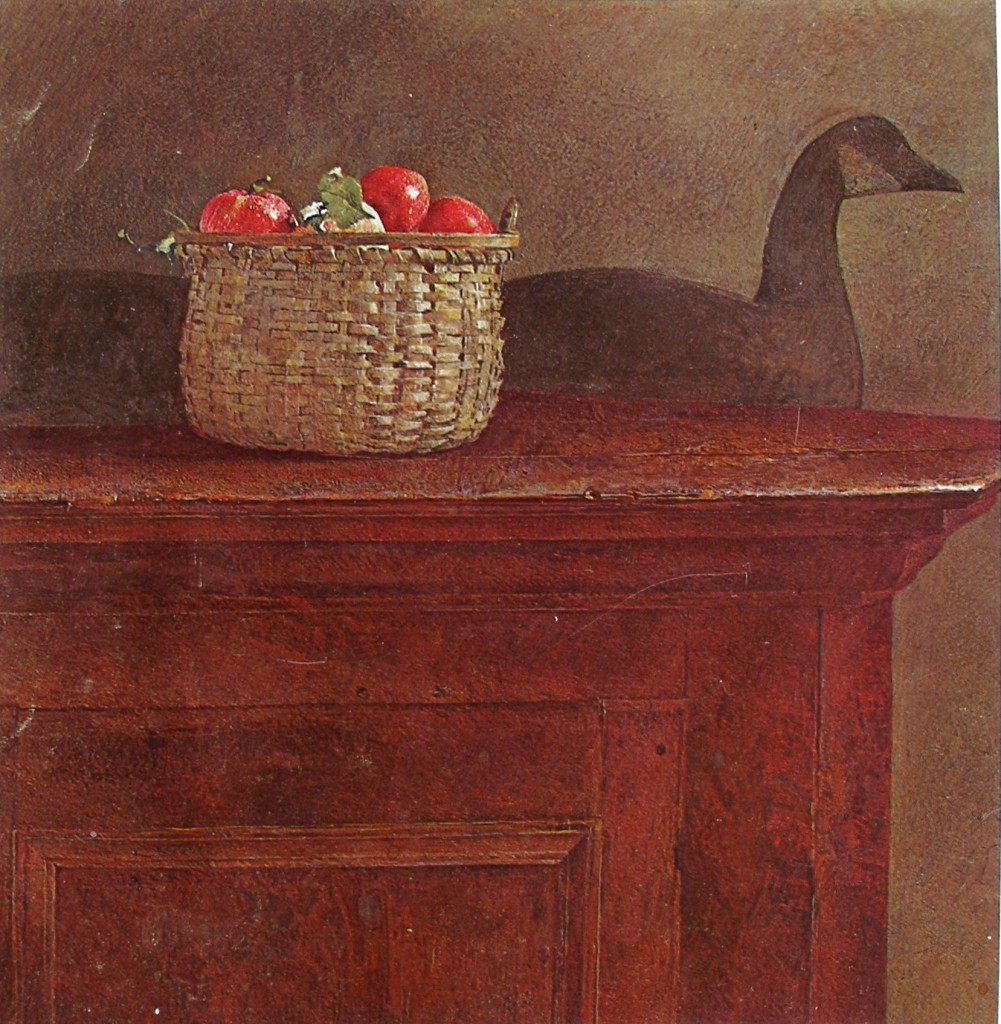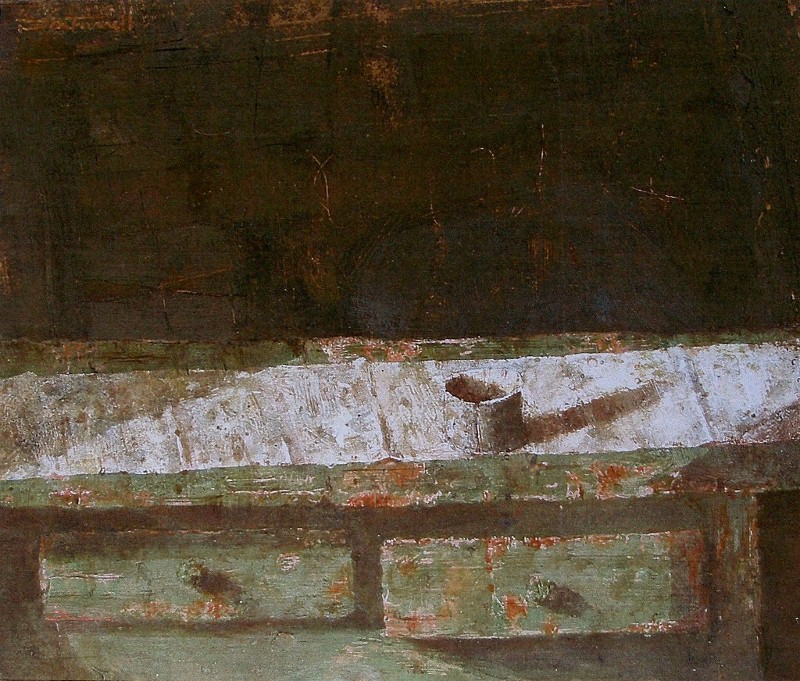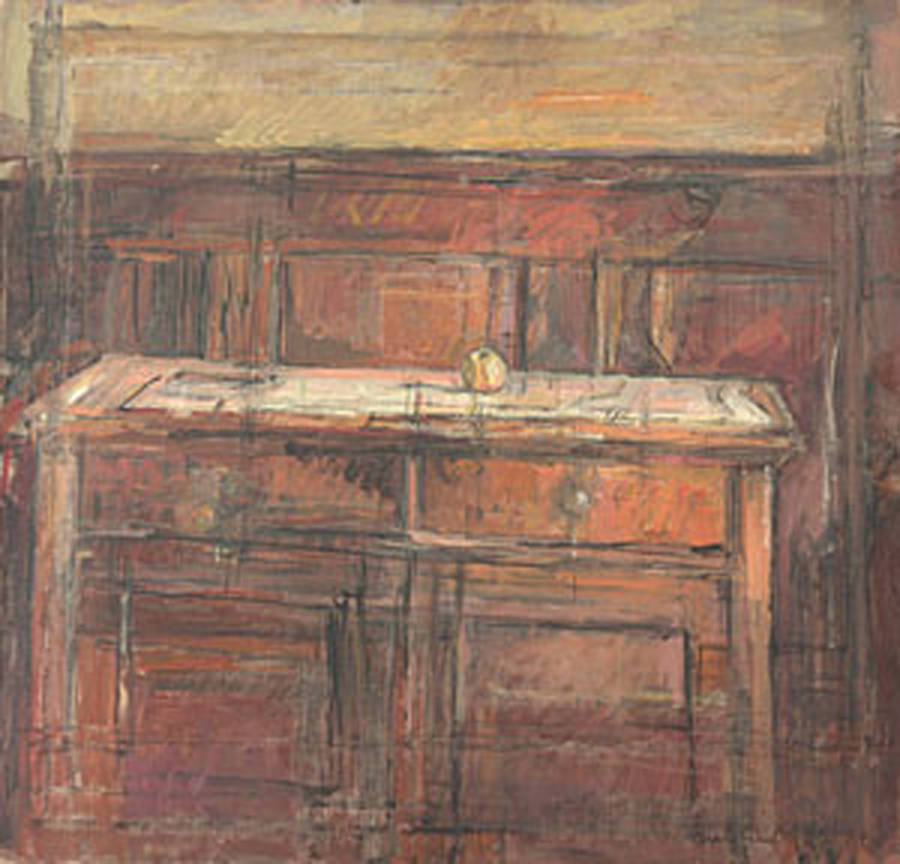This painting has the wonderful consideration of raising the table to the picture plane. And I focused on spatial planes as well, which is very challenging. I want the viewer to feel the space the planes present. And I am pleased with the receding plane of the table which also could be termed as a spatial shift. The shift represents movement (the viewer’s movement), which is more sensed than seen and provides time. Thank you Cezanne!
Permitting these to appear while painting is important, allowing intuition to come into play. I began with a table and wall and then let the play begins. Thinking of shapes, rhythm and movement, rather than objects. And of course my favourite things usually find their way into the painting, which ensures continuity in my work.
The soaking pan anchors the composition and from there we move along the bottom edge connecting to the rhythm of the black weights, leading you to the oval on the wall. I then provided marks on the wall to return you to the pan. Do you feel the curved movement in the pan?
I permit myself time to assess and after much scratching and repainting found myself painting a small, very satisfying pink circle, which became the final note.
There are other lyrical markings, such as arrows and what I like to call loops which are in the pan and on the wall. There is also a very fine rhythm within the oval on the wall, echoing the arrangement of the weights. I strive for every mark to be in harmony.
I must also mention the angle attached to the soaking pan. Can you feel it’s importance?

